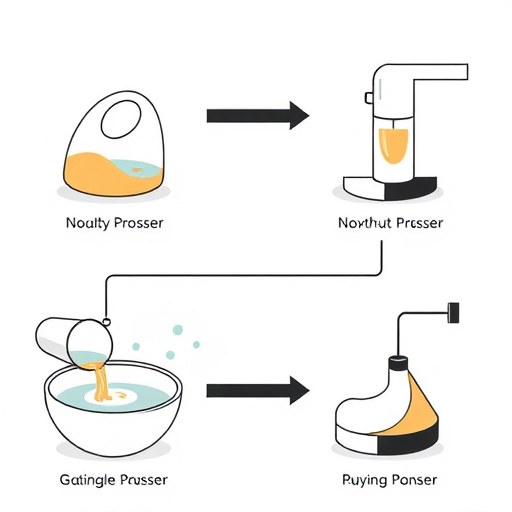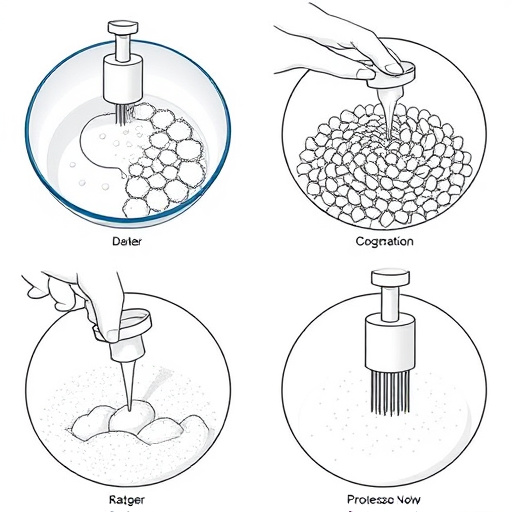Six Sigma Risk Management Strategies leverage Measurement System Analysis (MSA) for data accuracy and reliability, enabling organizations to identify and mitigate risks through root cause analysis and FMEA. Effective risk management involves selecting aligned metrics and utilizing advanced data collection & analysis techniques, such as predictive modeling and SPC. Tools like DMAIC drive quality improvement, defect reduction, and informed decision-making, minimizing hazards and optimizing outcomes, ultimately enhancing business performance and risk reduction.
Measurement System Analysis (MSA) is a powerful tool within Six Sigma Risk Management, offering a structured approach to identify and mitigate potential risks. This article delves into the essential aspects of MSA, providing insights for process improvement. We explore how identifying and defining risks, selecting appropriate metrics, and employing effective data collection methods can enhance decision-making. Additionally, we discuss implementing Six Sigma strategies to optimize results and mitigate risks, offering valuable strategies for organizations seeking to refine their risk management practices using proven Six Sigma techniques.
- Understanding Measurement System Analysis: The Foundation of Six Sigma Risk Management
- Identifying and Defining Risks: A Crucial Step in Process Improvement
- Choosing the Right Metrics for Effective Risk Assessment
- Data Collection and Analysis Techniques to Enhance Decision-Making
- Implementing Six Sigma Strategies: Mitigating Risks and Optimizing Results
Understanding Measurement System Analysis: The Foundation of Six Sigma Risk Management

Measurement System Analysis (MSA) is a critical foundation for successful Six Sigma Risk Management strategies. It involves evaluating and understanding the capabilities and limitations of measurement systems used in risk assessment and decision-making processes. By thoroughly analyzing these systems, organizations can ensure that their data is accurate, reliable, and aligned with the objectives of risk management.
In the context of Six Sigma, MSA helps identify and mitigate potential sources of variation and errors in measurements, leading to more effective risk mitigation strategies. It involves a systematic approach to assess the performance of measurement tools, methods, and procedures, enabling organizations to make informed decisions based on sound data. This process is particularly crucial as it directly impacts the accuracy and effectiveness of risk management plans, ultimately contributing to improved overall business performance and risk reduction.
Identifying and Defining Risks: A Crucial Step in Process Improvement

Identifying and defining risks is a fundamental step in any process improvement initiative, especially within the context of Six Sigma Risk Management Strategies. It involves meticulously scanning and understanding potential hazards that could impact project outcomes or operational efficiency. By adopting structured approaches like root cause analysis and failure mode effect analysis (FMEA), organizations can systematically uncover risks that might otherwise remain hidden. This proactive approach allows for the development of effective mitigation strategies, ensuring that risks are not only identified but also quantified and prioritized.
In the realm of Six Sigma, risk management is a critical component of the overall process improvement methodology. It involves analyzing data to uncover potential threats and implementing controls to minimize their impact. By integrating these risk assessment techniques into day-to-day operations, businesses can enhance their ability to deliver consistent, high-quality results, thereby fostering an environment where risks are not just managed but transformed into opportunities for growth and innovation.
Choosing the Right Metrics for Effective Risk Assessment

Selecting the appropriate metrics is a pivotal step in conducting effective risk assessment, especially within the framework of Six Sigma Risk Management Strategies. The right metrics ensure that risks are accurately identified, measured, and prioritized, enabling organizations to make informed decisions. When choosing risk assessment metrics, it’s essential to align them with the specific objectives and goals of the project or process being analyzed. For instance, in a manufacturing setting, metrics like defect rate, cycle time, or equipment downtime might be relevant, helping to identify and mitigate risks associated with production processes.
Furthermore, considering the context and nature of risks is crucial. Metrics should capture not only current performance but also potential future scenarios. Six Sigma methodologies advocate for a data-driven approach, so ensuring that metrics are measurable, actionable, and aligned with process capabilities enhances the accuracy of risk assessments. By thoughtfully selecting and applying these metrics, organizations can optimize their Six Sigma Risk Management strategies, leading to improved decision-making and overall risk mitigation.
Data Collection and Analysis Techniques to Enhance Decision-Making

Effective data collection and analysis techniques are pivotal in enhancing decision-making processes within risk management, especially in the context of Six Sigma strategies. By leveraging advanced statistical tools and methodologies, organizations can gain valuable insights into potential risks and their impact. This involves meticulously gathering relevant data points from various sources, such as historical records, real-time sensors, customer feedback, and market trends. Once collected, these data sets are analyzed using sophisticated techniques like predictive modeling, root cause analysis, and statistical process control (SPC).
Through these analyses, patterns and anomalies can be identified, enabling risk assessors to make informed decisions. For instance, Six Sigma methodologies encourage the use of defined measurement systems to monitor and control processes, thereby reducing variability and enhancing quality. By implementing such strategies, organizations become adept at forecasting risks, setting achievable goals, and implementing effective mitigation plans. This proactive approach not only minimizes potential losses but also fosters a culture of continuous improvement and robust risk management practices.
Implementing Six Sigma Strategies: Mitigating Risks and Optimizing Results

Implementing Six Sigma strategies is a powerful approach for organizations to effectively manage and mitigate risks in their processes. This data-driven methodology focuses on improving quality and reducing defects, which directly translates to minimizing potential hazards and optimizing outcomes. By utilizing Six Sigma tools and techniques, such as Define, Measure, Analyze, Improve, and Control (DMAIC), businesses can identify critical risk factors and develop targeted solutions.
These strategies empower organizations to make informed decisions, enhance process efficiency, and achieve exceptional results. With a structured framework, Six Sigma Risk Management Strategies enable teams to navigate complex scenarios, anticipate challenges, and implement effective mitigation plans. This proactive approach ensures that risks are addressed at their root cause, fostering a culture of continuous improvement and robust risk management practices.
Measurement System Analysis (MSA) serves as the bedrock for successful Six Sigma Risk Management Strategies, enabling organizations to identify, define, and mitigate risks effectively. By employing tailored metrics, advanced data collection methods, and insightful analysis, companies can make informed decisions, optimize processes, and achieve remarkable results. Implementing MSA best practices ensures that risk assessment becomes a strategic imperative, fostering a culture of continuous improvement and enhancing overall operational excellence.
